MONARCHY
The death of Queen Elizabeth II, and the uses (and abuses) of royalty

Queen Elizabeth II has died and the British throne is now in the hands of her son, Charles III. Is the idea of monarchy still relevant or is it a thing to be relegated to the pages of a history book?
I know what my people are thinking tonight…
I wonder what the king is doing tonight?
What merriment is the king pursuing tonight?
The candles at the court, they never burned as bright.
I wonder what the king is up to tonight?
How goes the final hour
As he sees the bridal bower
Being regally and legally prepared?
Well, I’ll tell you what the king is doing tonight:
He’s scared! He’s scared!…
You wonder what the king is wishing tonight?
He’s wishing he were in Scotland fishing tonight!…
— from Camelot, by Alan Jay Lerner and Frederick Loewe
…“The time has come,” the Walrus said,
To talk of many things:
Of shoes — and ships — and sealing-wax —
Of cabbages — and kings —
And why the sea is boiling hot —
And whether pigs have wings”…
— from The Walrus and the Carpenter by Lewis Carroll
“But the Emperor has nothing at all on!” said a little child. “Listen to the voice of the child!” exclaimed his father. What the child had said was whispered from one to another. “But he has nothing at all on!” at last cried out all the people. The Emperor was upset, for he knew that the people were right. However, he thought the procession must go on now! The lords of the bedchamber took greater pains than ever, to appear holding up a train, although, in reality, there was no train to hold, and the Emperor walked on in his underwear.”
— from The Emperor’s New Clothes by Hans Christian Andersen
If one were transported backwards to the year 1910, the centrality of the idea and the reality of monarchies globally would have been immediately obvious. With the exception of Latin America and the United States, along with France (sometimes), Switzerland and Liberia, the primacy of hereditary rulers was the norm rather than the exception.
Follow Daily Maverick’s ongoing coverage on the death of Queen Elizabeth II, the meaning of her legacy and what happens next with King Charles III
All across Europe, from Portugal to Russia, from Scandinavia through to the Middle East, it was hereditary rulers who held sway, often in nearly absolute monarchies, despite the presence of parliaments. Continuing to South Asia, British India was an integral part of the British Empire, true, but much of India was actually governed through the indirect rule of the many princes, maharajahs, traditional chiefs and other miscellaneous rulers whose hereditary circumstances had been in place for centuries.
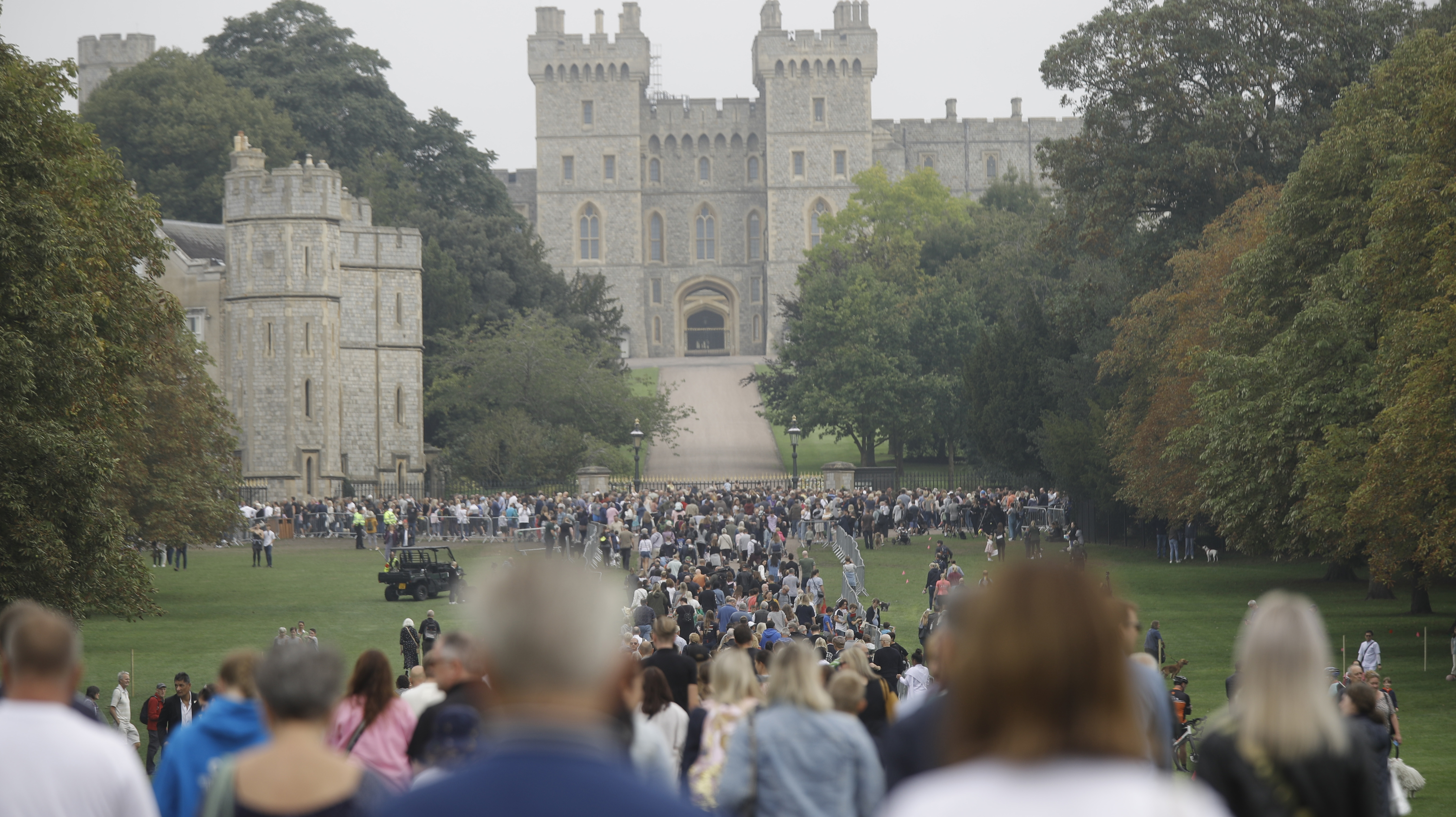
People on the Long Walk come to pay their respects to the late Queen Elizabeth II at Windsor Castle, in Windsor, Britain, on 11 September 2022. (Photo: EPA-EFE / Olivier Hoslet)
Continuing that journey further East, French Indochina was similarly a suzerainty over a collection of minor kings, just as was the British rulership of Malaya, and a major part of Dutch rule over the vast Indonesian archipelago. China was still in the final years of the Ching dynasty — the country’s last hereditary rulers — while the Meiji Restoration of 50 years earlier had brought power back to the court of the Japanese emperor and his government, and moved it away from hundreds of years of a hereditary shogunate.
Meanwhile, in Africa, while there was only one totally independent African monarchy — in Abyssinia/Ethiopia and only one other small independent nation in the shape of Liberia — European powers ruled the rest. Simultaneously, they largely left the continent’s many traditional rulers in place, and they had considerable authority over things.
Franz Ferdinand
In fact, the major but unintended hammer blow against the monarchical rule was the assassination of the heir to the Austro-Hungarian throne — Archduke Franz Ferdinand in 1914 by a Bosnian Serb nationalist. That became the immediate event that provoked the cataclysm that was World War 1 (along with the Great Depression and then World War 2), a war that led to the eventual demise of the global imperial order.
The first war had led to the abolition of deeply rooted imperial systems in Germany, Russia, Austro-Hungary and the Ottoman Empire. By the end of the second, the royal establishments in Albania, Yugoslavia, Italy, Bulgaria and Romania had become history as well. Along the way, due to other pressures, royal or imperial families in Portugal, China and Spain were vanquished as well. And once India became independent, by a decade afterwards, the various princely houses had been stripped of any formal power (and sometimes even their homes as well). Meanwhile, the post-colonial royal families in Greece, Ethiopia, Libya, Egypt, Iraq, Iran, Laos, Cambodia, the remnant Vietnamese royals and Afghanistan were eventually out of luck as well.
Any serious claimants to new lines of royalty were just about impossible to come into being, even though some authoritarians have tried hard to emulate all but the hereditary nature of royalty, often in regimes that were more barbaric than the ones that had preceded them. Lest we forget, however, the Democratic People’s Republic of Korea has achieved a unique status as the world’s only hereditary communist “monarchy” — they are now three generations into a real dynasty.
Sovereign royal families now remain largely in parts of the Near East, in Bhutan, among the Persian Gulf states, or in a few African nations such as eSwatini and Morocco, along with a handful of small Pacific Island nations like Tuvalu. The remaining European royal houses in Scandinavia and the Low Countries (along with a reimagined royal Spanish family) have largely transitioned to becoming citizen-monarchs — riding bicycles, going to universities, doing good works and even getting jobs.
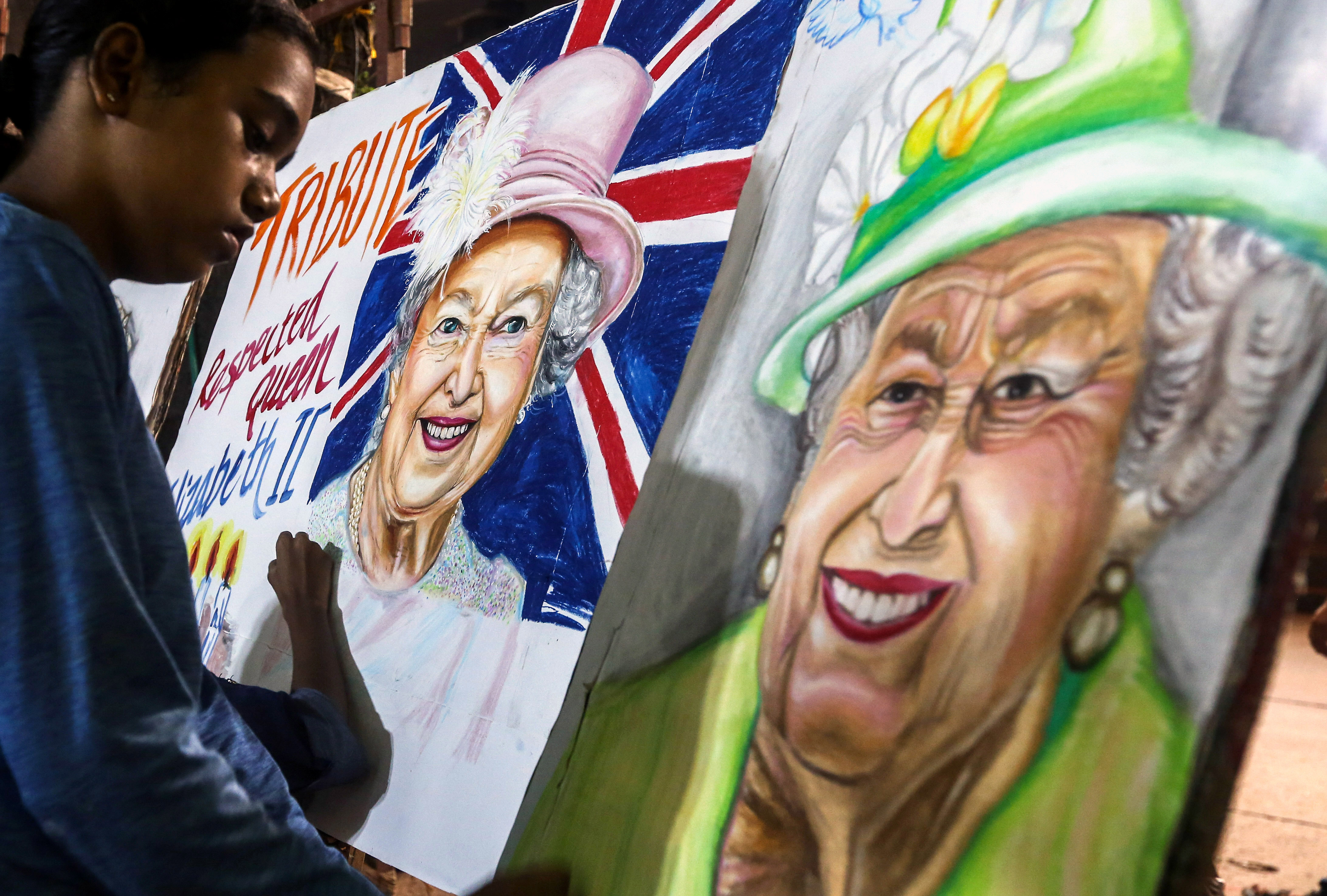
Students of Gurukul School of Art pay tribute to Britain’s late Queen Elizabeth II by painting drawings of her, in Mumbai, India on 9 September 2022. (Photo EPA-EFE / Divyakant Solanki)
The royal family in Thailand has remained largely respected, but it has effectively been kept out of politics and governing. Similarly, the Japanese imperial family has absolutely no role in national governance — it is not even the head of the country, but merely a symbol of the state.
Most of those former European royal families now seem to spend their energies squabbling over who has the right to claim to be the “real” pretender to the throne, the use of the old imperial seal, or the right to press the family’s claims for the restoration of their previously owned villas, castles, jewels, and the like. For the most part, what they don’t seem to do very much of is getting on with their lives — getting a real job, and acting like good citizens wherever they were resident.
Consider the fate of the son of Bulgaria’s pretender to the throne. Living in exile in Spain, he returned to Bulgaria to successfully become its prime minister, only to fail to achieve any of his campaign promises and then beat a hasty retreat to an exile where he could join the Euro-trash glitterati parties.
About the only ex-royal who has ever seemed to make a real job of it was the late Prince Otto von Habsburg. In writings and speeches, he became a tireless campaigner for the EU and other European unification efforts.
In South Africa, of course, there is a continuing debate over the relevance, utility, importance and cost to the taxpayers of the gaggle of royal houses spread across the country in what is, after all, supposed to be a republic. This is especially the case if those royals do very little in the way of what could be called “good works,” while cruising around in their polished Maybachs. And, of course, existing underneath the royals in that human ecosystem are all the many chiefs, often squabbling over who has what authority over which village, or who has the right to succeed a previous chief.
Royal obsessions
Even as the idea of monarchy has moved from the centre of most discussions on almost anything important, it is also true that humanity has always been intrigued by the ideas of kingdoms, monarchs, royalty, and hereditary rulers. We’ve always loved to tell the stories of those figures — real or legendary — sometimes even imbuing them with supernatural powers, or commingling their stories with the workings of the gods.
In our own home, we have shelves filled with religious texts from all of the world’s great religious traditions. One thing is certain about most of those volumes — they are filled with reports of the good and bad behaviour of kings and other royalty. Or think back to the Homeric writings and, putting aside all those frequent references to gods and goddesses, the poet’s writing is all about how those Trojan and Greek kings and acolytes behaved.
On one of our home’s walls, too, we have a large painting given to us many years ago. It is actually a segment of a wayang beber, that is, a long, rolled picture that, as it is unfurled, the dalang master tells the story as a gamelan orchestra plays. This particular picture is from one of the Panji tales, ancient Persian stories that had first travelled to India, and then carried on to Southeast Asia by traders an aeon ago. Quite naturally, it depicts a prince who is being charged with liberating a beautiful princess from incarceration by a really bad guy. The story is ancient, the picture is drawn in a traditional style, but, curiously, the colouring has all the grace notes of our own time with its use of DayGlo colours, highlighting the weapons and costumes of the characters.
But think also of our own contemporary culture. Traditional, familiar children’s stories are often about good (and bad) kings and princes — and, of course, princes and princesses. Opera, of course, is also frequently about the lives of those same sorts of people. And then there is cinema and television. Queens Victoria and the two Elizabeths and their lives have been exhaustively depicted in film for decades, while the Disney studio has regularly ground out cartoons (and now produces live action-style animation) about a whole roster of princes, princesses, kings and queens. Sometimes they are even animals (think of “The Lion King”) imbued with regal, anthropomorphic qualities and circumstances.
Of course, our common literature often speaks of kings and queens, from the Bible, through much of Shakespeare’s output, and on through to writers of the present as they examine royal lives and times from throughout history. There seems an insatiable appetite for such literature. The very idea of royalty is deeply woven into popular culture, even as the census of the numbers of actual members of royalty (and any automatic justifications for such a thing) has declined sharply from its apogee back at the beginning of the 20th century.
(Truth in telling time, I should note that over the years I have had interactions with three members of royalty. I became an acquaintance of the king of eSwatini during our time there and afterwards; my wife and I shared the Emperor’s box at the opera in Tokyo with the man who would, soon enough, become the next emperor in Japan; and I once led the Sultan of Jogjakarta, Hamengkubuwono — “the nail that holds the world together” — on a tour and discussions of the methods of the Smithsonian when he visited Washington.)
The United Kingdom
And that, of course, must take us to the most recent events in the United Kingdom. The British monarchy remains in place, even as it has a new leader for the first time since 1952. With the passing of Elizabeth II, and that seamless handoff to her son, now Charles III, the resilience and perhaps even the continued existence of the British monarchy into the future may be questioned by a wide range of people.
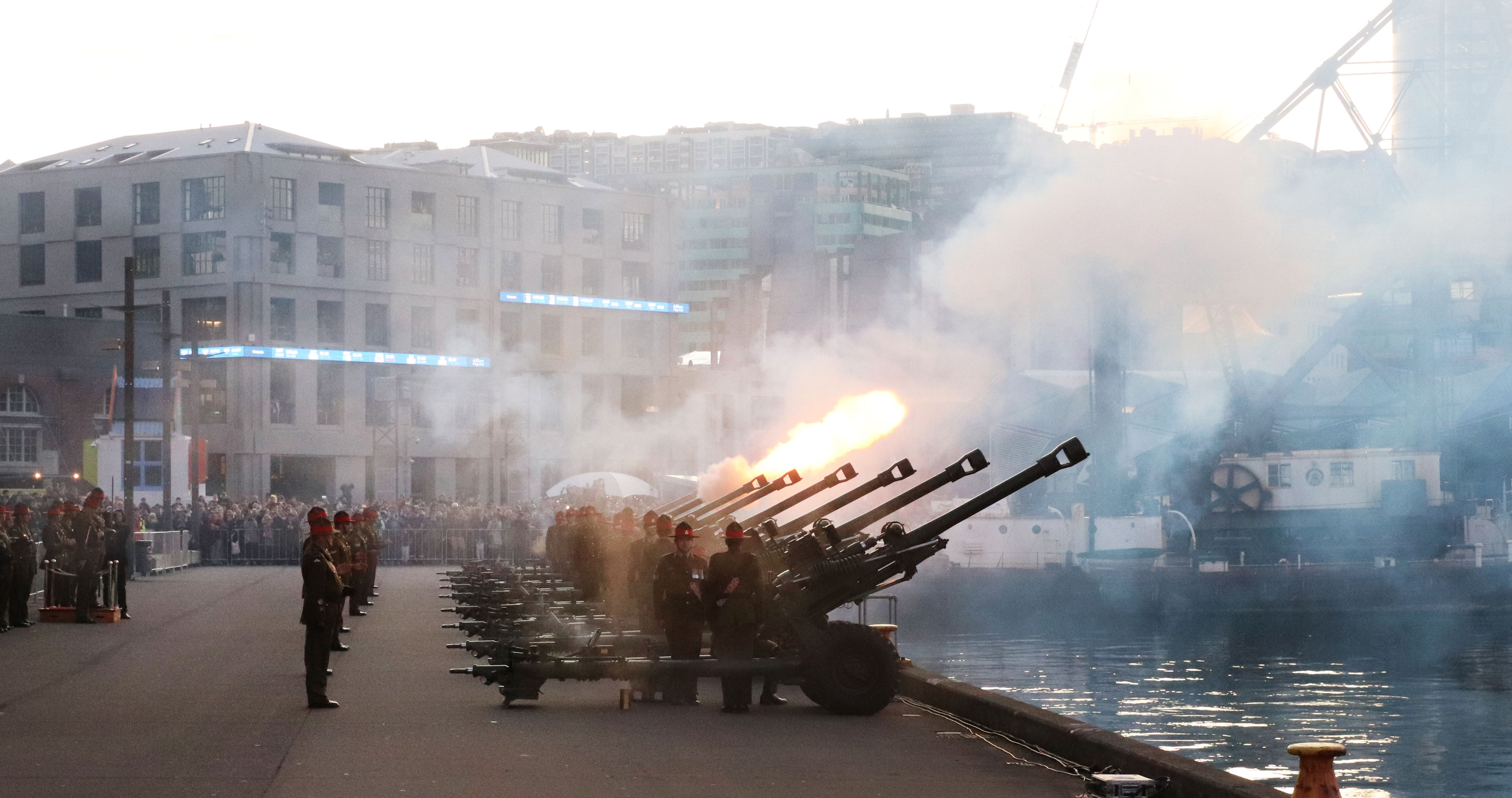
Cannon are fired over Wellington harbour by soldiers from the 16 Field Regiment as part of the 96-gun ‘Death Gun Salute’ on 9 September 2022 in Wellington, New Zealand to mark the death of Queen Elizabeth II. (Photo: Lynn Grieveson / Getty Images)
Some are already working hard to heap the blame for all the sins Britain clearly committed on to the royal family, from the beginnings of its conquest of Ireland nearly a thousand years ago and on through the epoch of colonisation, despite the obvious fact a contemporary British monarch reigns rather than rules. On that basis, the new king (or his mother) can hardly be held directly accountable for the sins of their earlier forebears, centuries before.
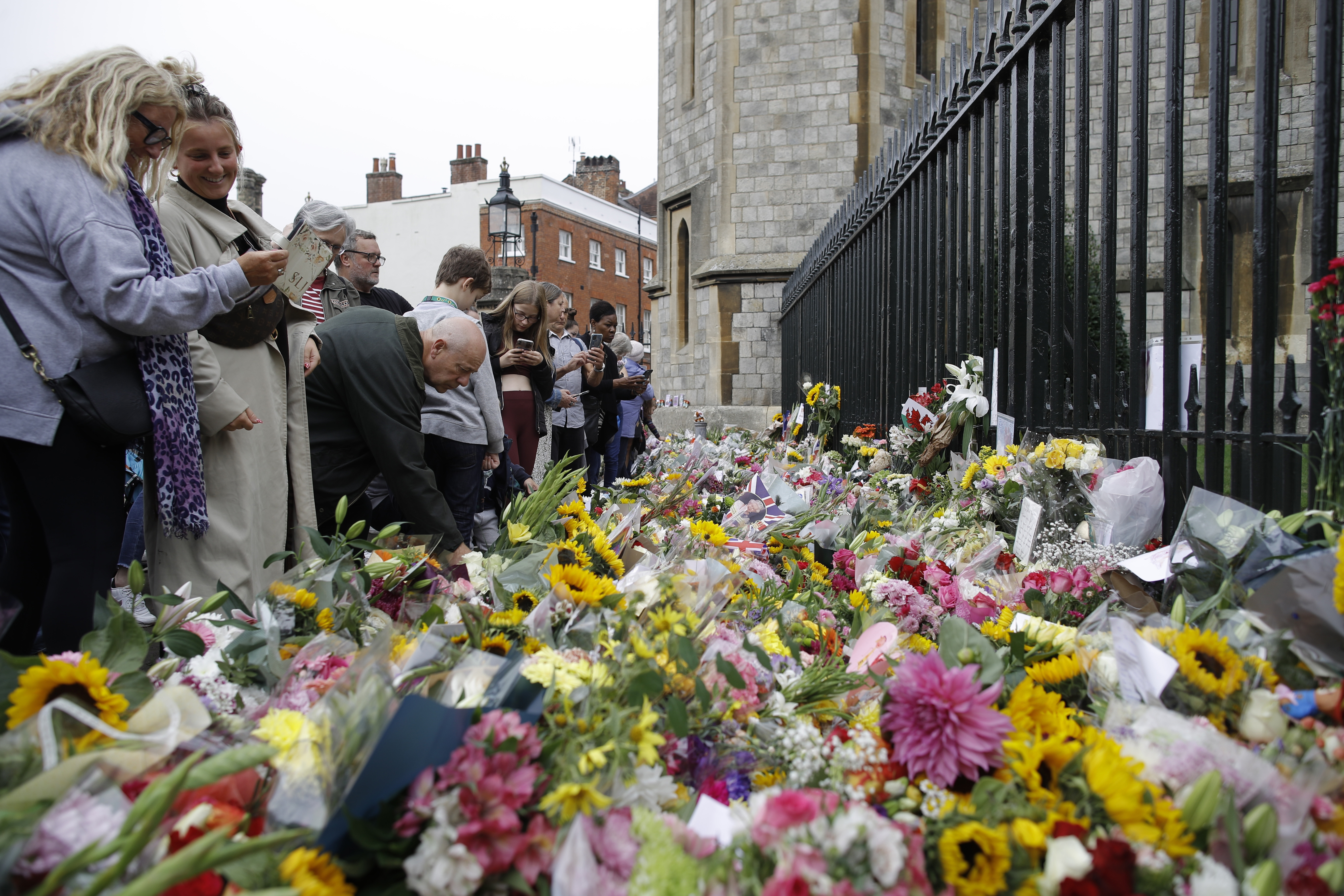
People pay their respects to Queen Elizabeth II near Windsor Castle in Windsor, Britain, on 11 September 2022. (Photo: EPA-EFE / Olivier Hoslet)
If the new king does not rule, but largely exists in a bubble of unending ceremonies, official openings, flower shows, agricultural shows, reading speeches prepared by others, and undertaking visits filled with all that official to-ing and fro-ing, what, exactly, is the function of the British monarchy? Playwright and royal critic David Hare, writing in the Guardian the other day, was less than convinced. Hare said:
“How do we draw up a balance sheet? Is it even appropriate? You can’t blame the sovereign for the failings of her people. In the debit column, there’s no question that the monarchy functioned, as it had over previous generations, as a drag on essential change. None of the four radical ambitions of the postwar period [was] achieved. The Queen did little to confront or overturn Britain’s cynically misleading impression of stately timelessness. The lasting improvements in sexual and social tolerance that will give her years their defining flavour were finally nothing to do with her.
“In the credit column, she was liked and admired as an individual, who was in love with an exceptionally interesting man, and who had children, at least one of whom was thankfully a whole lot worse than any of our own. In 1066 and All That, no question, Elizabeth would be accounted a good queen. But did she serve to create a good country? That, I’m afraid, would be too much to ask.”
In seeming response to that, the New York Times’ Serge Schmemann could argue,
“In many ways, through her demeanor, propriety, steadfastness and unwavering service — and simply by being there for so many years — Queen Elizabeth came to define the constitutional monarch for Europe and for much of the world. She was the most-traveled monarch in the world: The British newspaper The Telegraph calculated that by her 90th birthday, she had covered at least 1,032,513 miles and 117 countries. The 13 American presidents she met all tried hard to behave properly in her presence.
“Part of her appeal was the extravagant — some might say excessive — pomp and ceremony that accompanied her every royal appearance. While Scandinavian countries deliberately decontented their monarchies until their kings and queens could barely be distinguished from normal citizens, Britain proudly maintained the full medieval monty: gilded carriages, bearskin helmets, liveried footmen and volumes of tradition.
“It was marketing, to be sure; the royals are central to Britain’s brand and identity. But Queen Elizabeth was prepared to treat it all, from wearing a five-pound crown while reading a canned message in Parliament to feigning delight in some tropical ceremony, as the service to which she dedicated her life. As she said in a touching speech on her 21st birthday, ‘I declare before you all that my whole life, whether it be long or short, shall be devoted to your service and the service of our great imperial family to which we all belong.’ Though democracy left her no real governing power, she was ahead of her time in championing equality and diversity in the Commonwealth and, by most accounts, she made her views discreetly known to successive prime ministers, whom she met weekly.”
But there is a further flicker of a flame of hope in all this, in my view. Charles III, while he was Prince of Wales as he waited for his turn to step up, had increasingly taken up the causes of supporting environmental protection, protecting the ecology, and encouraging sustainable agriculture, and all those ideas that related to those positions. Initially, his was a largely gentle crusade, and his opinions and ideas were ridiculed by many who pushed instead for ways to increase the nation’s GDP, almost whatever the cost to those pesky trees (or, for that matter, a growing divide between the richest and those less well endowed). That he was nearly delusional was sometimes the charge.
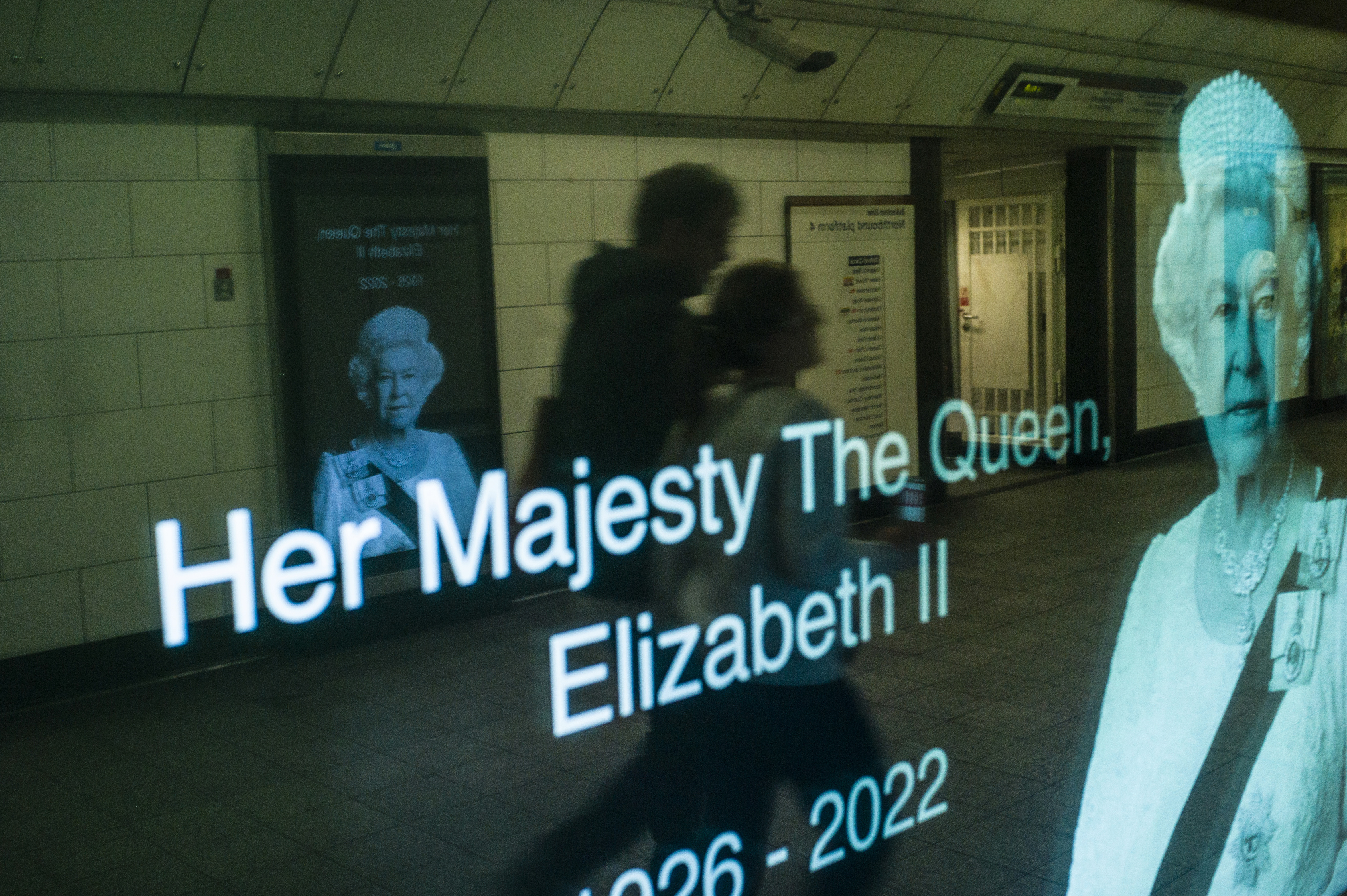
Commuters pass by a poster of the late Queen Elizabeth II in the London underground on 10 September 2022. (Photo: EPA-EFE / Yoan Valat)
But in the years between that earlier era and now, the ideas the prince had been propounding for years have, for a growing number of people and governments and international bodies, become the common language of concern for the planet’s future, even if, not yet, massive action.
But, what if, in his own way and at his own pace, Charles III manages to make this view of his a truly national concern and he helps lead in this regard, internationally? That, surely, would be the kind of contribution that could endear him to the British people — and the world — in turn giving a new breath of resilience to his family and their institution, “the firm,” as it has so often been called. Now we will watch and wait. DM


















 Become an Insider
Become an Insider
encouraging and helpful for a hopeful change in world views on climate change etc. And may all those beautiful bouquets in honour of the late queen not go to waste.
Yep, it would, but for Di and Camilla. The British don’t forgive; they remember lest they forget.